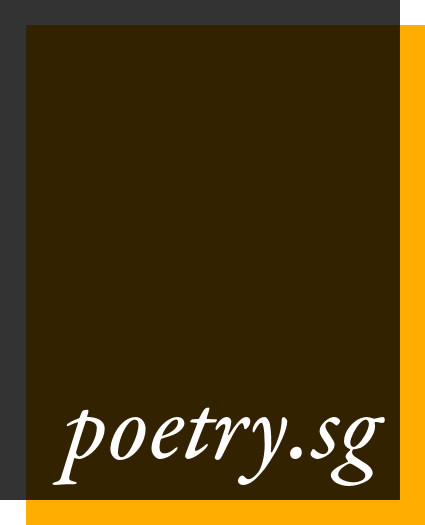Madeleine Lee (b. 1962)
CRITICAL INTRODUCTION
Written by Nuraliah bte Norasid
Dated 4 Nov 2015
Madeleine Lee “has been called a financial whiz” who “also writes poetry,” a juxtaposition that makes her an “oddity in Singapore” (y grec 87). Lee has more than two decades of experience in managing public and private equities, on top of which the serial entrepreneur has launched her own ventures, all while writing poetry, which she has been doing since the age of thirteen. However, it was only after joining a writing programme by the National Arts Council and with encouragement by her mentor, Suchen Christine Lim, that she first published her work in the 2003 collection, a single headlamp.
In the foreword to this collection, Lee Tzu Pheng observes a quietness in Madeleine Lee’s poetry. She describes the poems as an “arrival” of “equanimity” that reflects an equilibrium of the personal and external. Lee’s writing demonstrates an awareness of both the potential for language to be a window into a world of meaning and association, and, at the same time, a tool that obscures it. Lim picks up on the perceptiveness of Lee’s poems, stating that they are “[s]imple words on a page that startled [Lim] into seeing” (17). Lee comments on these observations of quietude and vision in her own afterword to her first collection, where she mentions how her poetry of the previous two years casts the poet as the observer rather than the involved. The idea of poet as observer permeates through poems in her other collections, the “raintree” series from fiftythree/zerothree being one example of this.
Lee shows an ability to capture small moments, moving away from so-called larger issues, the “mutterings” of nationhood and state as Neil Murphy puts it in the article “Poet of the Moment”. Lee’s microcosmic focus allows her to see poetry in the simple things while remaining relevant to the larger workings of the world.
It is not until one gets to y grec, co-written with playwright Eleanor Wong during a trip to Greece, and then to synaesthesia that one starts to Lee’s interests shift. In these collections, people, the persona and the environment exist alongside each other, revealing complex relationships that differ from poem to poem. This idea of synchronicity, of fusion even, is evident in those poems where Lee engages with art and history, such as poems from y grec, and her later two-poem chapbook, pantone 125. Histories are not simply stories that happened in a time long past, isolated from or irrelevant to present experience. Observations of the present day live alongside the historical as parallel lines that never meet (“parallel lines”), and the mythic as ancient relic is juxtaposed with images of modernity in ageless settings:
the cerulean aegean
steals the sea-goers
in white cruise ship
decked in vulgarity[ . . . ] not like long ago
in a ship of wood
did ulysses set off
on an homeric sail(“aegean”)
Lee’s recent work, one point six one eight, is a study in form complementing content, from the craft of the book to the poems. one explores the theme of migration as a circular movement that questions and attempts to define home. While human notions of migration involve borders, the book draws attention to the movements of migratory animals―the great egret, the wildebeest―as continuous and circular, disrespecting man-made boundaries as they have been for millennia. One sees true migration as a borderless endeavour, a movement without end, and Lee captures this both in writing and in the physical book. The “poems” in one are really segments of a long poem, written on two very large pages, cut to form a spiral and then folded into a pamphlet between a front and back cover. Readers may begin reading from any segment. If they insist on chronology, there are guiding arrows to help them move from part to part, journeying first from the Serengeti to the mudflats of Singapore’s Sungei Buloh Nature Reserve in their own migratory movement.
one gives a sense of beginning at home, ending at home, and yet being at home every step of the way, a fresh take on travel and migratory narratives. As environmentalist Dr. Geh Min best puts it, Lee’s recent poems develop beyond the poet observer. They “do not look at nature from the outside however admiring or omnipotent the observer’s eye [ . . . ] instead she, and we, are an integral part of the whole picture” (pantone 125). Lee shows us that no one is ever truly an island. Rather, the individual is one part of a whole that exists in an ecosystem, an ocean.
Works cited
Chia, Yueh Chin. “Startled Deer Poetry.” Quarterly Literary Review Singapore. 3.1. (2003). Web.
Lee, Madeleine. a single headlamp. Singapore: Firstfruits Publications, 2003.
—. fiftythree/zerothree. Singapore: Firstfruits Publications, 2004.
— and Eleanor Wong. y grec. Singapore: Firstfruits Publications, 2005.
—. synaesthesia. Singapore: Firstfruits Publications, 2008.
—. pantone 125. Singapore: Math Paper Press, 2012.
—. one point six one eight. Singapore: Ethos Books, 2013.
Lim, Siew Kim. “Madeleine Lee.” Singapore Infopedia. 2008. Web.
Murphy, Neil. “A Poet of the Moment.” Quarterly Literary Review Singapore. 4.3. (2005). Web.


